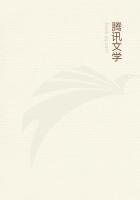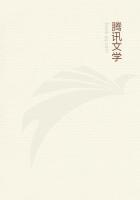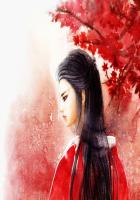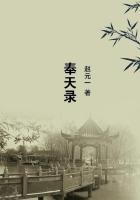We here give the little diagram originally drawn by Newton, to explain the experiment by which he first learned the composition of light. A sunbeam is admitted into a darkened room through an opening, H, in a shutter. This beam when not interfered with will travel in a straight line to the screen, and there reproduce a bright spot of the same shape as the hole in the shutter. If, however, a prism of glass, A B C, be introduced so that the beam traverse it, then it will be seen at once that the light is deflected from its original track. There is, however, a further and most important change which takes place. The spot of light is not alone removed to another part of the screen, but it becomes spread out into a long band beautifully coloured, and exhibiting the hues of the rainbow. At the top are the violet rays, and then in descending order we have the indigo, blue, green, yellow, orange, and red.
The circumstance in this phenomenon which appears to have particularly arrested Newton's attention, was the elongation which the luminous spot underwent in consequence of its passage through the prism. When the prism was absent the spot was nearly circular, but when the prism was introduced the spot was about five times as long as it was broad. To ascertain the explanation of this was the first problem to be solved. It seemed natural to suppose that it might be due to the thickness of the glass in the prism which the light traversed, or to the angle of incidence at which the light fell upon the prism. He found, however, upon careful trial, that the phenomenon could not be thus accounted for. It was not until after much patient labour that the true explanation dawned upon him. He discovered that though the beam of white light looks so pure and so simple, yet in reality it is composed of differently coloured lights blended together. These are, of course, indistinguishable in the compound beam, but they are separated or disentangled, so to speak, by the action of the prism. The rays at the blue end of the spectrum are more powerfully deflected by the action of the glass than are the rays at the red end. Thus, the rays variously coloured red, orange, yellow, green, blue, indigo, violet, are each conducted to a different part of the screen. In this way the prism has the effect of exhibiting the constitution of the composite beam of light.
To us this now seems quite obvious, but Newton did not adopt it hastily. With characteristic caution he verified the explanation by many different experiments, all of which confirmed his discovery. One of these may be mentioned. He made a hole in the screen at that part on which the violet rays fell. Thus a violet ray was allowed to pass through, all the rest of the light being intercepted, and on this beam so isolated he was able to try further experiments. For instance, when he interposed another prism in its path, he found, as he expected, that it was again deflected, and he measured the amount of the deflection. Again he tried the same experiment with one of the red rays from the opposite end of the coloured band. He allowed it to pass through the same aperture in the screen, and he tested the amount by which the second prism was capable of producing deflection.
He thus found, as he had expected to find, that the second prism was more efficacious in bending the violet rays than in bending the red rays. Thus he confirmed the fact that the various hues of the rainbow were each bent by a prism to a different extent, violet being acted upon the most, and red the least.
[PLATE: ISAAC NEWTON.]
Not only did Newton decompose a white beam into its constituent colours, but conversely by interposing a second prism with its angle turned upwards, he reunited the different colours, and thus reproduced the original beam of white light. In several other ways also he illustrated his famous proposition, which then seemed so startling, that white light was the result of a mixture of all hues of the rainbow. By combining painters' colours in the right proportion he did not indeed succeed in producing a mixture which would ordinarily be called white, but he obtained a grey pigment.
Some of this he put on the floor of his room for comparison with a piece of white paper. He allowed a beam of bright sunlight to fall upon the paper and the mixed colours side by side, and a friend he called in for his opinion pronounced that under these circumstances the mixed colours looked the whiter of the two.

